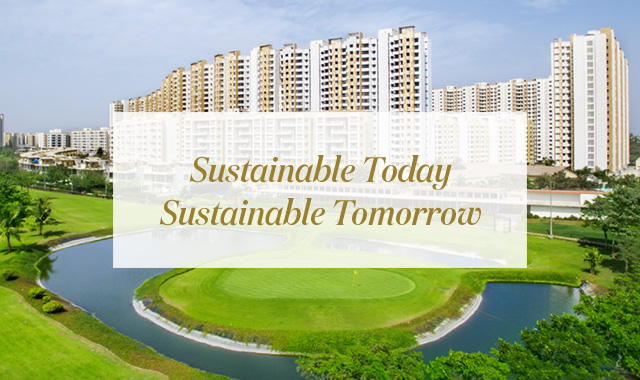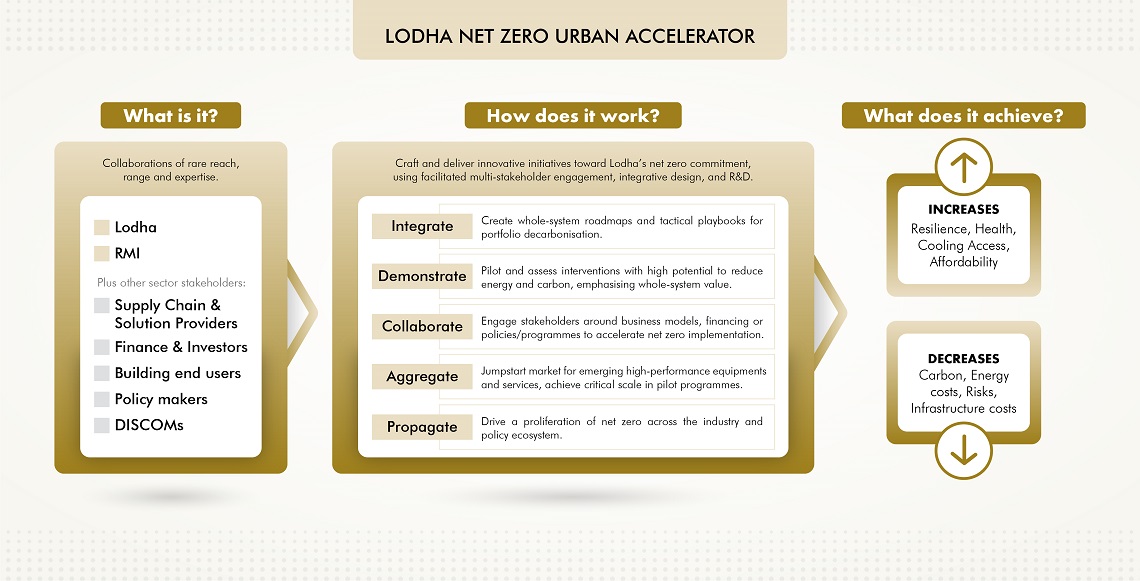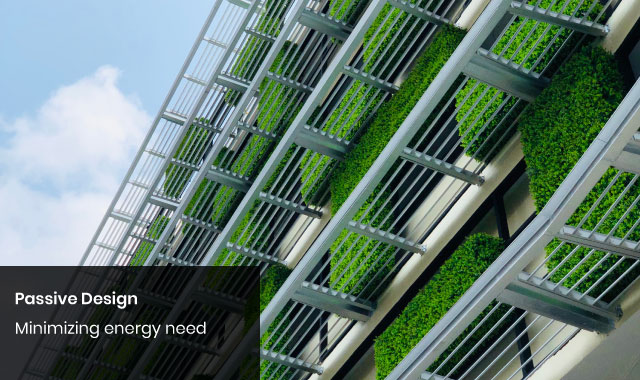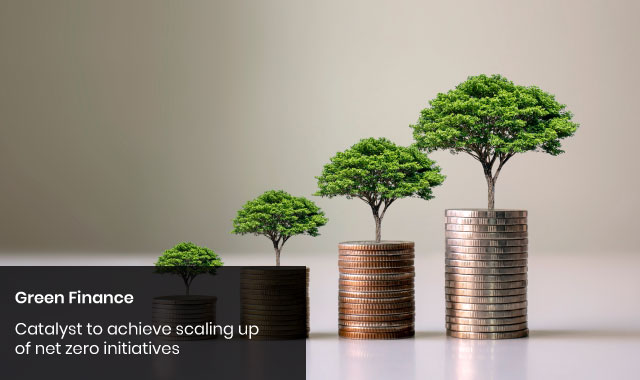

This webpage is optimized to save energy
Real estate contributes close to 40% of global ghg emissions, directly and indirectly. Being a leading real estate player, with the unique ability to create city scale developments like Palava, we have the ability the touch the entire spectrum of emissions from materials and supply chain, to operational emissions in residential communities and commercial and industrial hubs, to eliminating the need of commute and avoidable transportation.

The accelerator will significantly maximise the real estate sector’s contribution toward India’s net-zero emissions targets while increasing resilience, health, affordability, and energy services. It will support six categories of initiatives that can enhance the sustainability of the urban real estate ecosystem -
Materials and construction
Embodied carbon, or upfront carbon contributes to around 15%-30% of lifecycle emissions in the built environment. Hence, the use of inefficient materials should be curbed before it gets locked- in as excessive carbon in the environment. The accelerator will prioritise the reduction of the embodied carbon by interventions that can be efficiently controlled by us, like design and construction. The accelerator will also continue to engage with industry leaders and stakeholders to influence and control the supply chain emissions by committing growing demand for greener materials. To read our insights from a baselining study of embodied carbon in high rise buildings, click here.

Passive Design
Energy efficiency can be achieved by eliminating the need of energy by taking an integrated design approach and deploying passive design features in the built environment by doing right performance analysis, deploying best design strategies and usinge performance materials. The accelerator will significantly reduce avoidable operational energy through passive measures, not only in the building, but also in the development and areas around it. Know More
Ultra efficient equipment
Our economies of scale will tunnel through cost barriers for innovative, premium and efficient product offerings. The accelerator will work towards the best achievable efficiencies of the equipment starting with a focus on Cooling, which is one of the biggest contributors of emissions during the operational stage of the built environment. The accelerator will leverage the pioneering work done during the Global Cooling Prize conducted by RMI recently, and will work towards mainstreaming climate-friendly residential cooling solutions without warming the planet.
Clean energy
Renewable energy integration is a key driver of decarbonization and the accelerator will work towards a rapid transition across the spectrum - from deploying renewable energy in operations as well as the final product. The accelerator will help create an integrated renewable energy transition roadmap by enabling aggregation, economy, and access to green energy in all aspects of development and end use. Know More
Zero carbon mobility
In India, 1/6th of all GHG emissions come from transportation, while the proportion of transportation related emissions in the developed world is much higher. With a strong focus on walkability, shared mobility and green mobility, transportation emissions can be avoided to a great extent. In turn, this can also create a significant positive impact beyond the reduction of emissions like reduction in pollution, travellers’ safety, and more. The accelerator will work on green mobility starting with creating a model EV ecosystem where personal, shared and last mile mobility is enabled to switch away from hydrocarbons.

Green finance
Innovative finance will be a key catalyst in ensuring that the net zero ambition is delivered and scaled. The accelerator will also explore opportunities in green financing options that can act as valuable tools to enable the transition and support the business models and collaborations needed across technical focus areas.